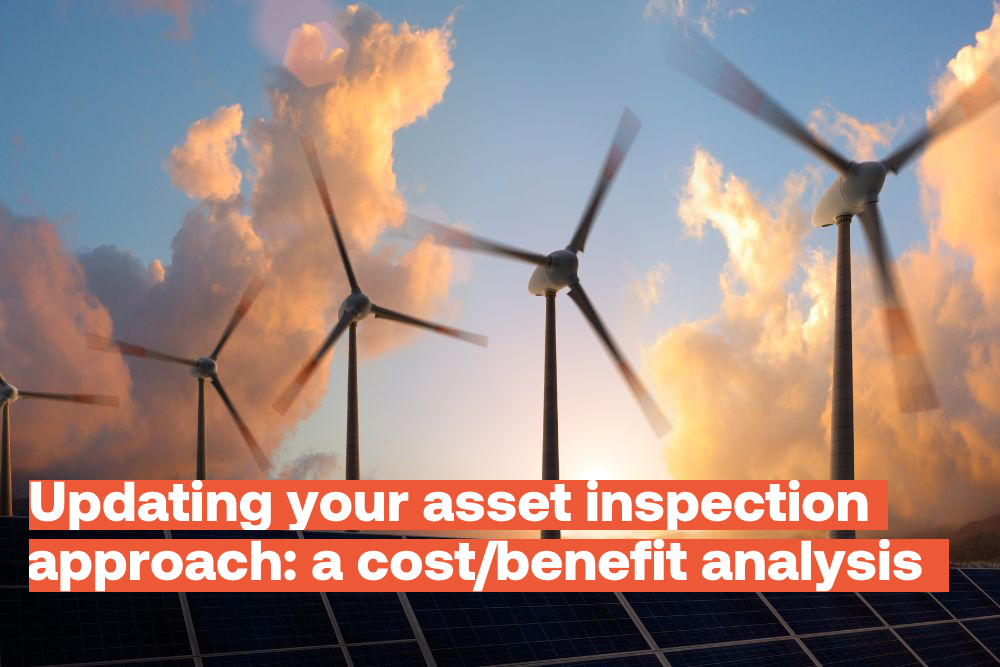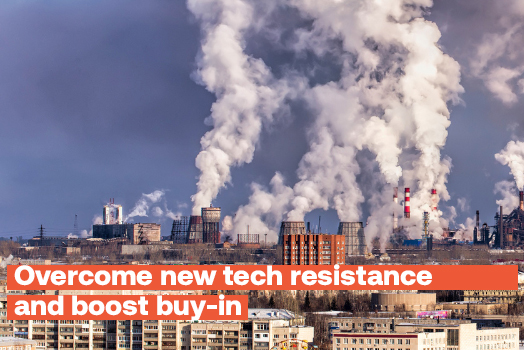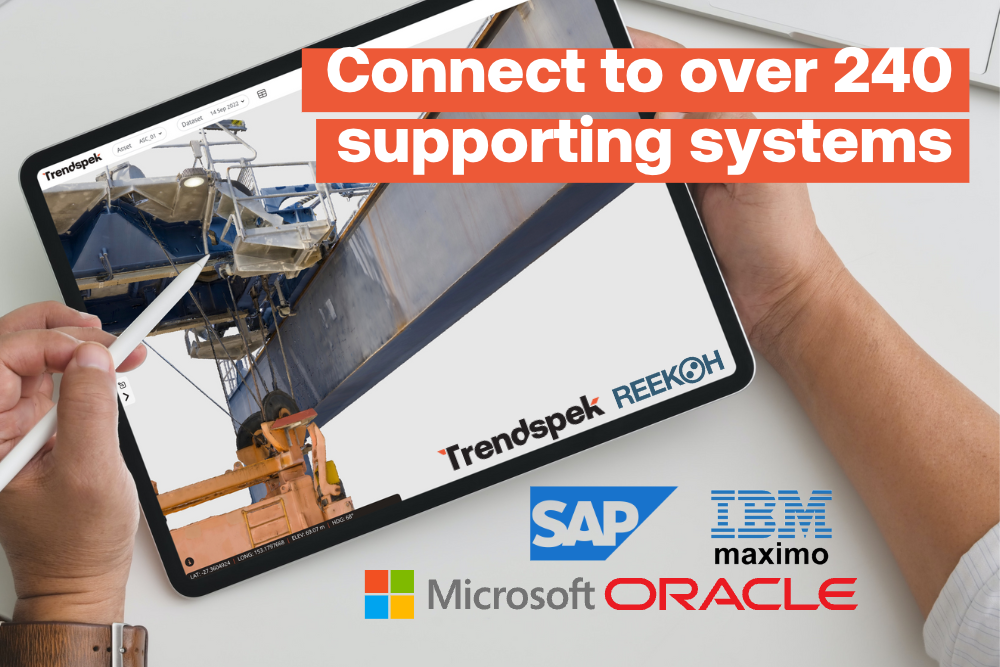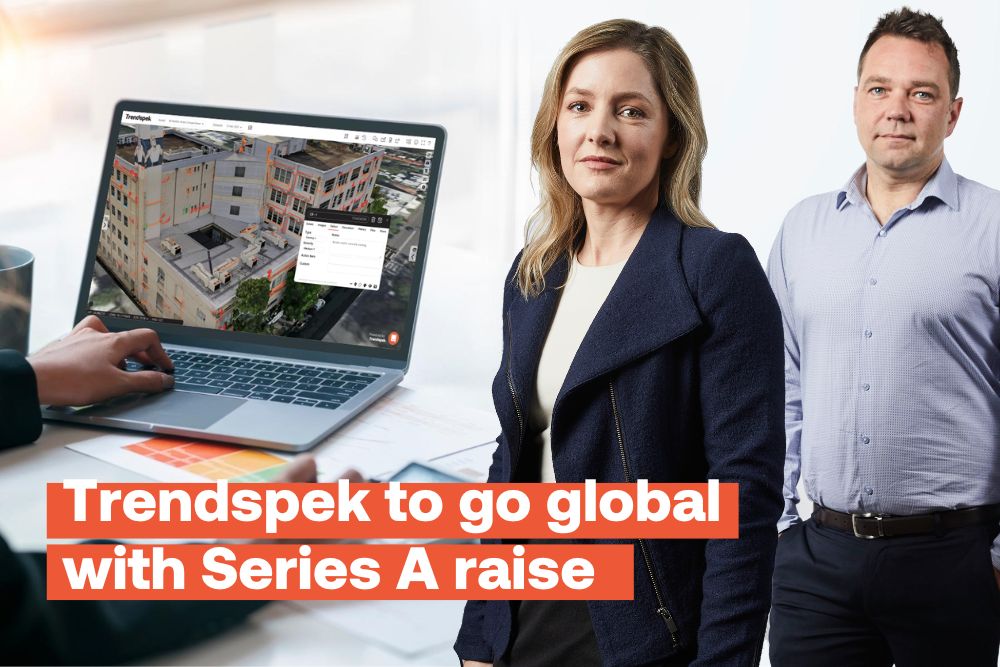
With the rapid advancements occuring in information technology comes immense amounts of data – so much so that the “size of the Internet doubles about every 2 years”.
Asset management is no exception to this trend, with new technology enabling easier and faster access to more data about assets than ever before – if asset managers are prepared to capture it and know how to use it.
When it comes to asset inspections, however, many organisations still tend to rely heavily on people.
People to visit sites to examine for defects and people to tend to asset failures. People to capture and process data at a rate and in the limited way that we are capable of as humans.
People spending precious time and energy that could be spent elsewhere.
A common reason for this, apart from a resistance to change, can be the overwhelming nature of data at these volumes – “the challenge of organising, synchronising, visualising and interpreting data into information and knowledge”. This challenge is one that is ongoing for many asset managers, as is finding a way to use the data captured to its full potential, in the most efficient way.
Additionally, the emergence of a “risk-based approach to managing assets” over the last decade has resulted in a tendency to stick to ‘the way things have always been done’, as opposed to venturing into new and potentially more advanced practices.
A recent Energy & Resources Enterprise Risk Management (ERM) Benchmark Survey undertaken by Deloitte showed that 95% of “participants have fully or at least partially integrated risk management into their asset management processes”, with the remaining 5% “planning to incorporate this practice in the future”.
Finally, with the ongoing pressure to reduce costs due to shrinking budgets, combined with staff shortages, many organisations perceive they don’t have the luxury of allocating time or people power to implement the systems required to use data effectively, or to action the resulting insights.
Trendspek’s Precision Asset Intelligence (PAI) software is a purpose-built solution to capturing and using data to its full potential, for asset managers, owners and engineers. It is a way to harness the strength of the absolute abundance of data available, and turn it into something digital and interactive, that delivers safer, reliable and more accurate insights.
And while Trendspek is being adopted rapidly by businesses that recognise the power of data, and want to free up the power of their people, those same factors as noted above will always influence the pace of this evolution.
Ultimately, for all businesses looking at new solutions (or trying to justify continuing with outdated practices) it should and often does come down to a cost/benefit analysis – ‘what will this cost me, and does the benefit outweigh that?’
When considering new solutions in asset management, and conducting your cost/benefit analysis, it is crucial you identify not just what it will cost you to evolve, but what it will cost you to stand still and potentially be left behind.
The Cost Analysis
Implementing any new technology – systems, softwares, applications – all require an investment to get up and running, as well as ongoing maintenance and support.
But when the benefit is equal to or outweighs the cost, that investment pays dividends!
Most commonly, the cost of updating will depend on the magnitude of the change required – how many people and processes will it impact and to what degree?
With change of this type often stimulated by an acknowledgment of challenge or failure in an existing solution, the first cost encountered is usually research – which is simply a resource cost.
If you are going to adopt a new technology solution in your business, you need someone to do the legwork – to look at what’s available, assess it against all other offerings, investigate pricing.
Further, you will often need that project manager (PM) to consult with your internal (or an external) IT and security specialist, to determine if that system will fit with what you have, what integrations are available and what risks might arise.
With research complete, comes the initial implementation cost, which is most often a combination of fees paid to the software provider or a third party implementer (as an example, most CRMS you’ll use a third party), in addition to internal human resource hours to coordinate and assist.
Once implemented, training and rollout is the next investment – and potentially your most important step, as without them, the financial investment you have made does not deliver the required ROI.
As most software these days is subscription-based, ongoing monthly or annual fees may also be a consideration.
But… when considering implementing an updated solution for your asset management process, it’s not just the tangible fees and costs of going ahead you need to consider. You also need to ask yourself, what are the costs of not updating your asset inspection approach?
Relying heavily on people to undertake routine and emergency asset inspections costs your business both time and money, which not only increases day-to-day running costs, but also can significantly impact maintenance costs.
The fact that this then results in less inspections being done due to human resources and budgets, can mean your asset isn’t as carefully monitored over time as it could be, reducing its ROI, and increasing the risk that defects may not be noticed until it is too late.
Interestingly, in reviewing our own work with clients, we can see in many cases, our approach to capture and our PAI software has actually been a less expensive asset inspection process than the traditional aerial gymnasts who glide down the asset facade, taking pictures!
So the question is, if you update your tech, what will it cost you now? But if you don’t make the update, what will it cost you later?
The Benefits Analysis
Updating your asset inspection approach comes with many benefits – and case studies are already indicating these wins far outweigh the associated costs.
More data, more context
Right now, however, current asset inspection approaches limit the amount of information that can be captured, and perhaps equally important, the level of context with which it can be reviewed.
As an example, traditional capture delivers individual photos of defects with no indication of where that photo fits on the overall asset, whereas modern practices deliver a full 3D model that can be zoomed in to focus on specific defects in the context of the entire asset.
Less people onsite, less safety risks
In addition to being able to make better decisions for your assets, using greater volumes of useful data, updating your inspection approach frees up people for more technical jobs. It also reduces the health and safety risk to employees by limiting the number that need to be onsite, how many times those visits need to occur and if they even need to work at heights.
This benefit is already in play, with “companies that have digitised and automated their maintenance processes now showing a significant increase in labour productivity and a 20 to 30 percent reduction in maintenance costs”.
Greater insights, smarter planning Digital asset capture and asset models also provide valuable asset data and key insights for future planning and modelling (including combining data from multiple sources).
With in-model markups and trend tracking that enables the same asset to be viewed side-by-side from two differently-timed captures, asset managers can better identify defects and plan maintenance more effectively over periods of time well into the future, to reduce costs and down time, and increase ROI or revenue.
Improved detail, increased accuracy
One major challenge to change, is often that people don’t feel sure that the outcome they will get in the future, will be of the same quality they achieve now. In the case of asset management, it’s easy to worry that a combination of a drone capture and model on screen, and the subsequent measurements available, won’t be as accurate as those taken by hand, in person.
Actually, markups and measurements in the model often are more accurate than those achieved on site. When conducted in person, asset inspections are much more subject to human error – the angle from which you view something can impact measurement, the level of access you have to it, the act of measuring itself, can be fraught with error.
On screen, the model, correct down to one millimetre, can be zoomed in on, an exact starting point and an end point marked, enabling the software to then calculate the exact distance between the two points without the same challenges a person on site might experience.
At Trendspek, one of the values we pride ourselves on is our honesty – and in complete transparency, updating your asset inspection approach straight away will not be right for every business. Factors from financial position to staff ability will always come into play.
But what we can clearly see, even through this quick summary of costs and benefits is evolving will be crucial to any business that wants to ensure accuracy, increase efficiency, build productivity, support safety and minimise risk.
Reach out to us to today to chat about updating your asset inspection approach!


